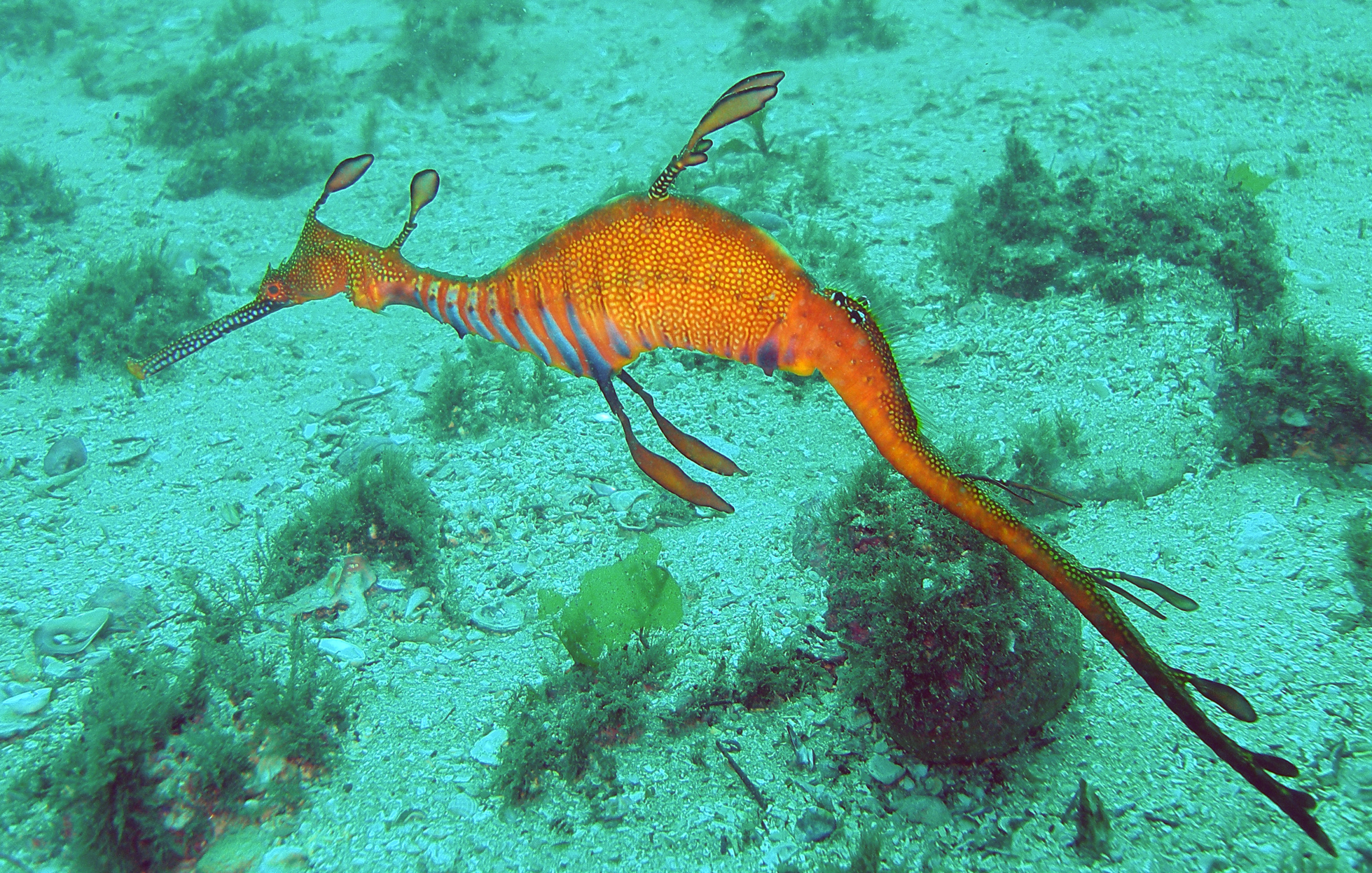In March 2020, researchers from the University of Technology Sydney began conducting SCUBA surveys in the Botany Bay area to study the habitat preferences of common (or weedy) seadragons (Phyllopteryx taeniolatus). The research team included SeadragonSearch team members Dr. David Booth and Dr. Selma Klanten, and was led by SeadragonSearch collaborator Sam Allan. The researchers observed the types of habitat actively used by weedy seadragons and made comparisons to available habitat in the study area. They also compared the distribution of weedy seadragons to the distribution of a certain type of kelp, Ecklonia radiata, and to the presence or absence of mysid shrimp (a seadragon’s main prey).
Past monitoring studies for weedy seadragons had been conducted in the same region, where the main types of habitat available are sand, rocks, and kelp cover. Those past studies had monitored seadragon abundances, reproductive habits, and movement patterns, but had not looked specifically at habitat preferences. Habitat preference can be thought of as an interaction between habitat availability and animal behavior- how the animal uses its habitat impacts its ability to survive.
Favorable habitat is important for weedy seadragons due to their unique physical adaptations. Seadragons are intricately camouflaged to blend in with algae-dominated surroundings, helping them to hunt for food inconspicuously as well as avoid being hunted themselves. Because they feed on mysid shrimp, the main trade-off they face is between the camouflage afforded by kelp cover and the locations of mysid swarms, which are often found in more open water. Previous work conducted in Botany Bay had suggested that seadragons might manage this trade-off with a preference for habitat along the kelp-sand interface, and the research team predicted that both the percent of kelp cover and the abundance of mysid shrimp would influence the habitat preferences of seadragons in the area. Better understanding these preferences would help to inform management of New South Wales seadragon populations.
Over the course of a year, the authors of this study conducted surveys on SCUBA to search for weedy seadragons and measure kelp cover in the study area. They also noted the presence or absence of mysid shrimp swarms. They were able to identify individual seadragons using the dragons’ unique face and body patterns, allowing them to recognize when a seadragon had been re-sighted without the need for physical tagging. This is similar to how SeadragonSearch uses pattern recognition software to track individual fish.
The research team found that weedy seadragons in the study area indeed prefer habitat that maximizes both the amount of kelp cover and the presence of mysid shrimp. Specifically, seadragons strongly prefer a minimum of 40% Ecklonia radiata cover, but will use sandy habitat as well if the density of mysid shrimp swarms is higher there. Understanding seadragon preferences for specific percentages of kelp cover combined with prey availability is very useful for predicting abundances in difference regions, as well as how they will thrive or suffer as their habitats are impacted by changing ocean conditions.
Read more about weedy seadragon habitat preferences in the original paper, here.

